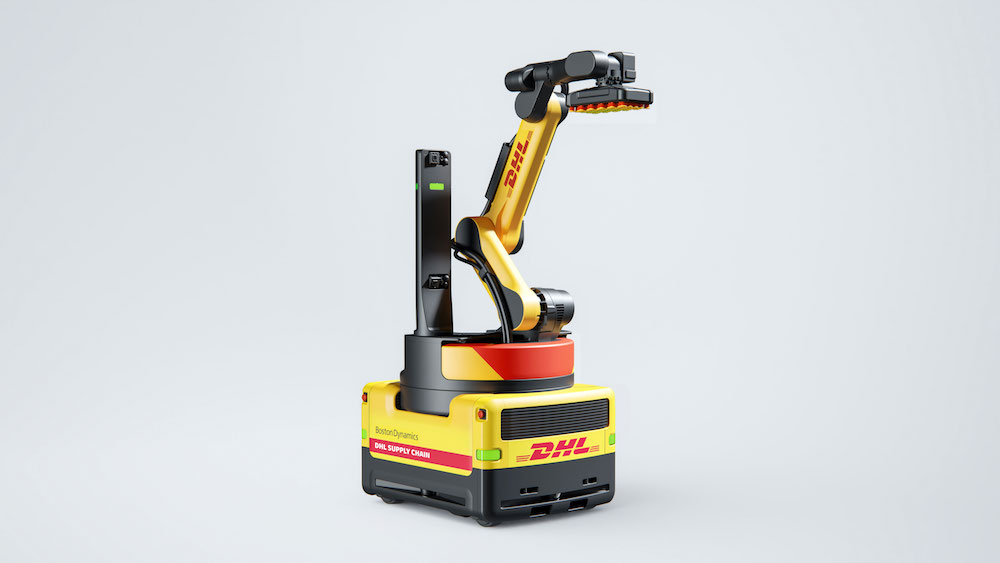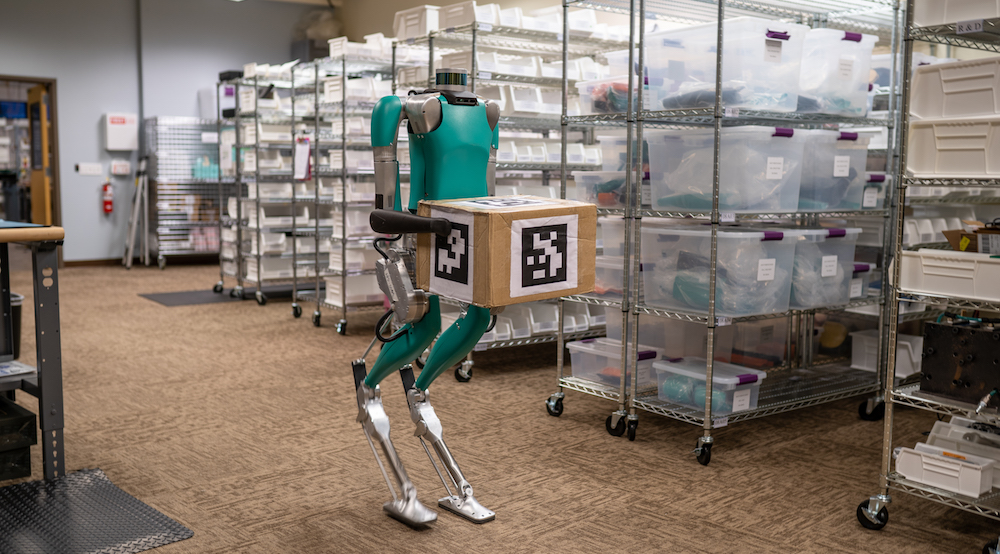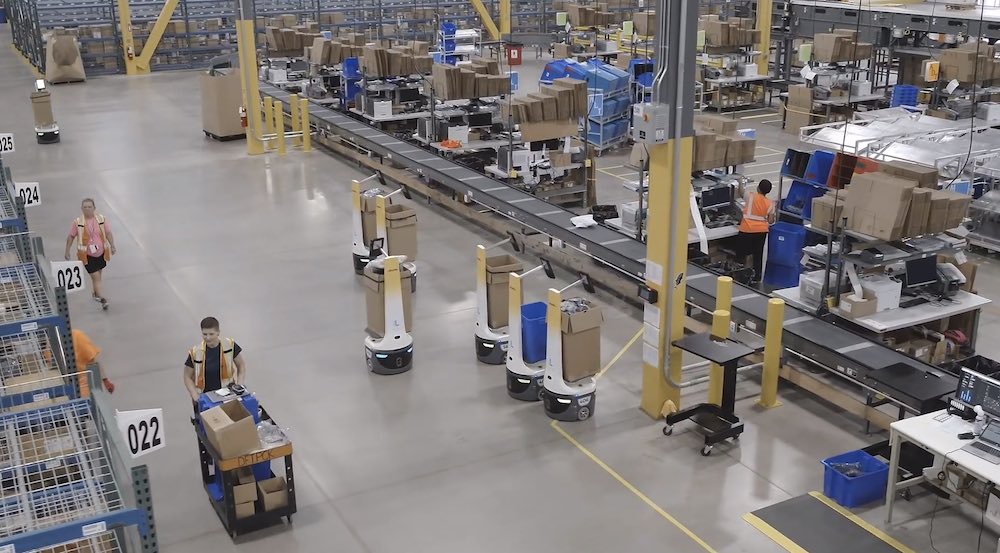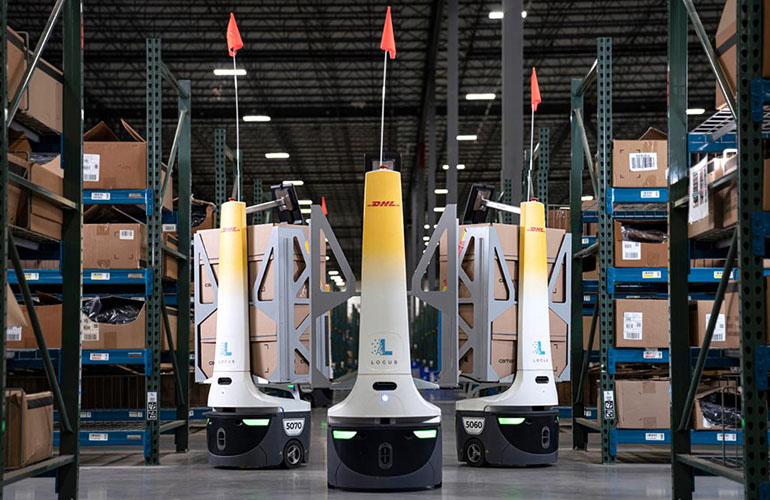Inside DHL’s robotics ecosystem

Sally Miller, CIO, North America, DHL Supply Chain
DHL is using robotics to support numerous warehousing and logistics tasks. DHL innovates its logistics workflow and the tools and technologies deployed in DHL distribution centers around the world, as the company continually improves its efficiency.
Sally Miller, DHL Supply Chain’s chief information officer for North America, recently spoke to The Robot Report about the types of robots the company uses and the innovation cycle it employs to find the most effective solutions.
Sally Miller will also be a keynote speaker at RoboBusiness, which takes place in Santa Clara on Oct 19-20, 2022.
The full interview with Sally was featured on a recent episode of The Robot Report Podcast, which you can listen to here. The text below has been edited for brevity and clarity.
Boston Dynamics and DHL have been working closely together for the last couple of years to test the Stretch robot. The robot will be tasked with several box-moving tasks inside DHL warehouses Can you update us on that partnership?
So we’re in the final testing phase, and this is the final iteration. The unit is on-site at one of our facilities. And we’re doing the final tweaks before the unit returns to Boston and they finalize any changes before we’re live in January. Following that, the rollout of subsequent sites will start. But this is just a final test period, then we’re ready to go.

The new Boston Dynamics Stretch robot is being tested by DHL for autonomous trailer unloading. | Credit: Boston Dynamics
Truck unloading is vital to your operations. Other robotics companies are also attacking this application. Why did you choose Boston Dynamics Stretch over the others? Did you try other solutions?
Truck unloading is one of the key activities in any warehouse. Not all of the trucks that we unload have carton products – a lot of the items are palletized. Only a certain percent of our facilities have floor-loaded products.
What we enjoy about working with Boston Dynamics is they are looking at use cases beyond just carton unloading. There are several other areas where we’re doing activities with cases that the Stretch unit could theoretically be used for. The real value in the Stretch robot comes in multiple activities beyond just case unloading. We’ve focused significantly on Boston Dynamics, there are other solutions that are coming to market, but right now we are focused on Stretch.

Digit v2 carrying a box. Digit v2 is the pre-production version of Digit. | Credit: Agility Robotics
Can you take us inside the trailer unloading process? I know it’s a grueling process for humans. Agility Robotics is making a two-legged robot that has been tested for trailer unloading. There’s a nice video showing the Digit robot working collaboratively with humans, carrying things into and out of a trailer. Are you considering removing humans from the trailer unloading process?
Attracting and retaining hourly labor is a challenge for everyone, especially with today’s scarcity of resources. Trailer unloading is one of the least liked jobs in the facility. I feel that Stretch will be able to unload faster autonomously than a two-legged robot. And the fact that it doesn’t work with humans is OK for now. Based on the speed that it can work, it’s a win that we don’t need people there.

Autonomous mobile robots from Locus Robotics. | Credit: Locus Robotics
DHL has a large fleet of Locus robots running around its facilities. Can you tell us a little bit about how DHL deployed the Locus solution and what it’s doing every day in the facilities?
We have deployed LocusBots in probably 15 facilities and are close to 2,000 bots deployed. This solution works extremely well. Locus is a very innovative company that keeps coming up with use cases to do more of the work in the facility. Our associates love working with the bots. They are cobots designed to work alongside associates. The associates travel less during the day and like going home and telling their families they’re working with robots.
We’re seeing that sites that have the solution deployed have lower turnover and a higher applicant rate. People want to work in environments where there’s more technology deployed. So Locus is a very effective solution that we have deployed where we’re doing high-volume each pick to totes.
Locus Robotics is a pioneer of the Robots-as-a-Service (RaaS) concept. What is your perspective of RaaS? Does RaaS simplify the sales process? What sold you on this business model? Were you initially doubtful this would be a reasonable solution for DHL?
We have a global agreement with Locus and their commercial model that they were able to work with us on works well with our commercial contracts. So it was beneficial to us. Obviously, we reassess if we should do the capital outlay versus the RaaS fee. But right now, it is more favorable to us.

DHL has a large fleet of Locus robots deployed in 3PL and distribution centers throughout its network. | Source: DHL
Can you walk us through the process DHL uses to evaluate a new solution and ultimately decide which robots are beneficial? What key performance indicators do you measure?
For assessment, we look at things that people bring to us, whether they be a startup company, an existing vendor with us, a customer, or a venture capital company. We have a lot of connections with VC firms because they want to bounce how viable some of these ideas are off of us. So we have a lot of inputs from various sources that we investigate.
The first thing we look at is whether the solution fits into a significant number of our facilities. We support several market verticals ranging from CPG, tech, life sciences, and healthcare, retail, e-commerce, automotive, and a catch-all bucket. DHL facilities aren’t all the same. They’re customized for the unique requirements of the customer.
If you walk into an apparel e-commerce facility, you’re going to see a lot of automation. If you walk into a tire distribution center, it’s going to be quite manual. Not everything fits. We have a database of all of our site profile information, so we’re able to quickly see if this is something we should dedicate resources to. If it makes it past that, we do a proof-of-concept where we take the solution to one of our sites that we believe it’s a fit for, and we test it out.
Based on how well it performs and how many sites we think it can be deployed at, it then moves to the product stage where it’s available for any of our 500 sites to deploy. But, usually, the proof-of-concept tends to be an iterative process with the vendor to make tweaks based on what we learned to make the return on the investment and the value to us better. So that’s a value that we bring to the vendor and why a lot of companies want to work with us; they will get that feedback if it moves to proof-of-concept. And if we think there’s a potential for the solution to become a product, we really provide the resourcing to get as much value out of the solution as we can.
The post Inside DHL’s robotics ecosystem appeared first on The Robot Report.
from The Robot Report - Robotics News, Analysis & Research https://ift.tt/0K9sR2O
via artificialconference

Comments
Post a Comment